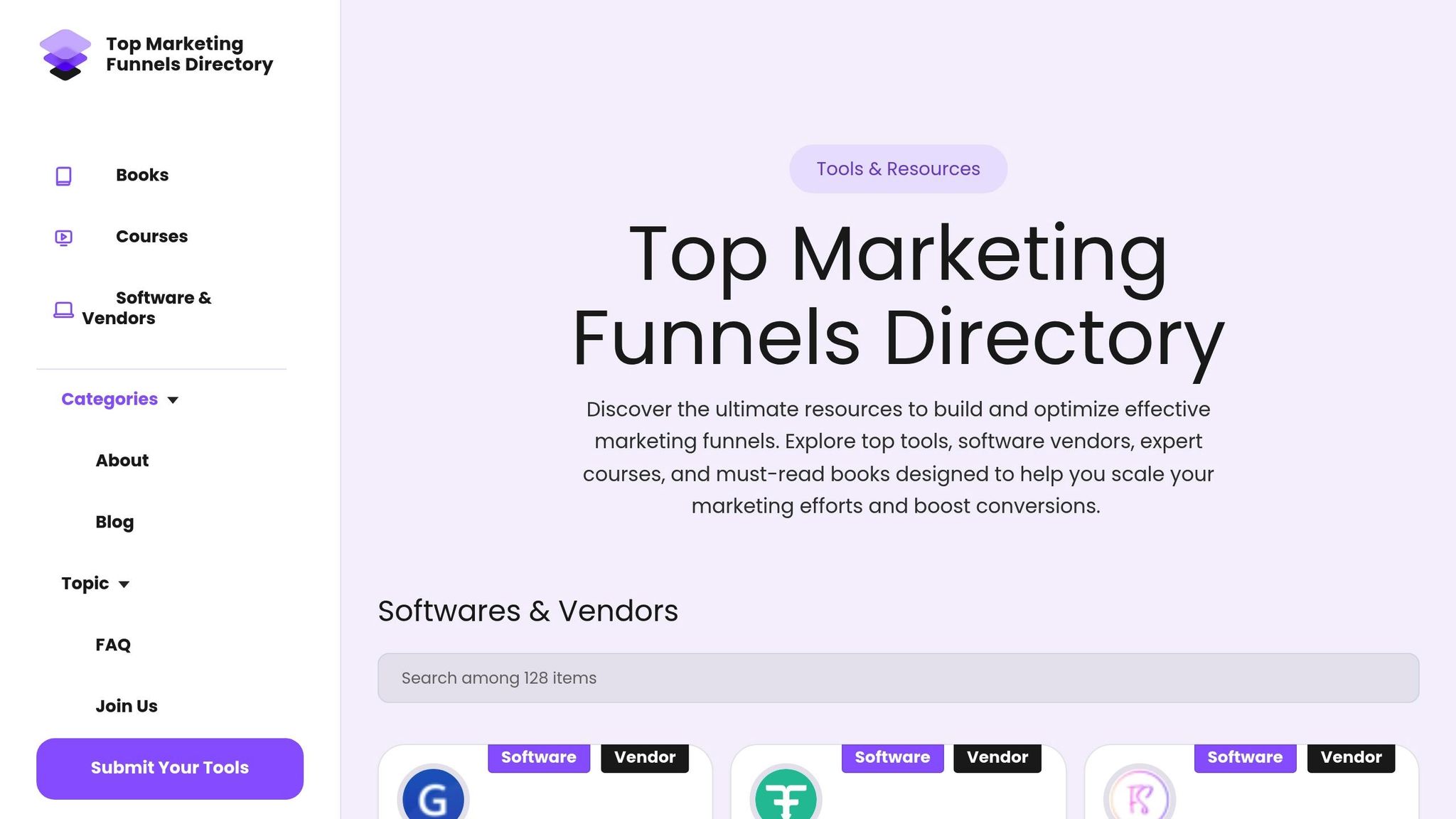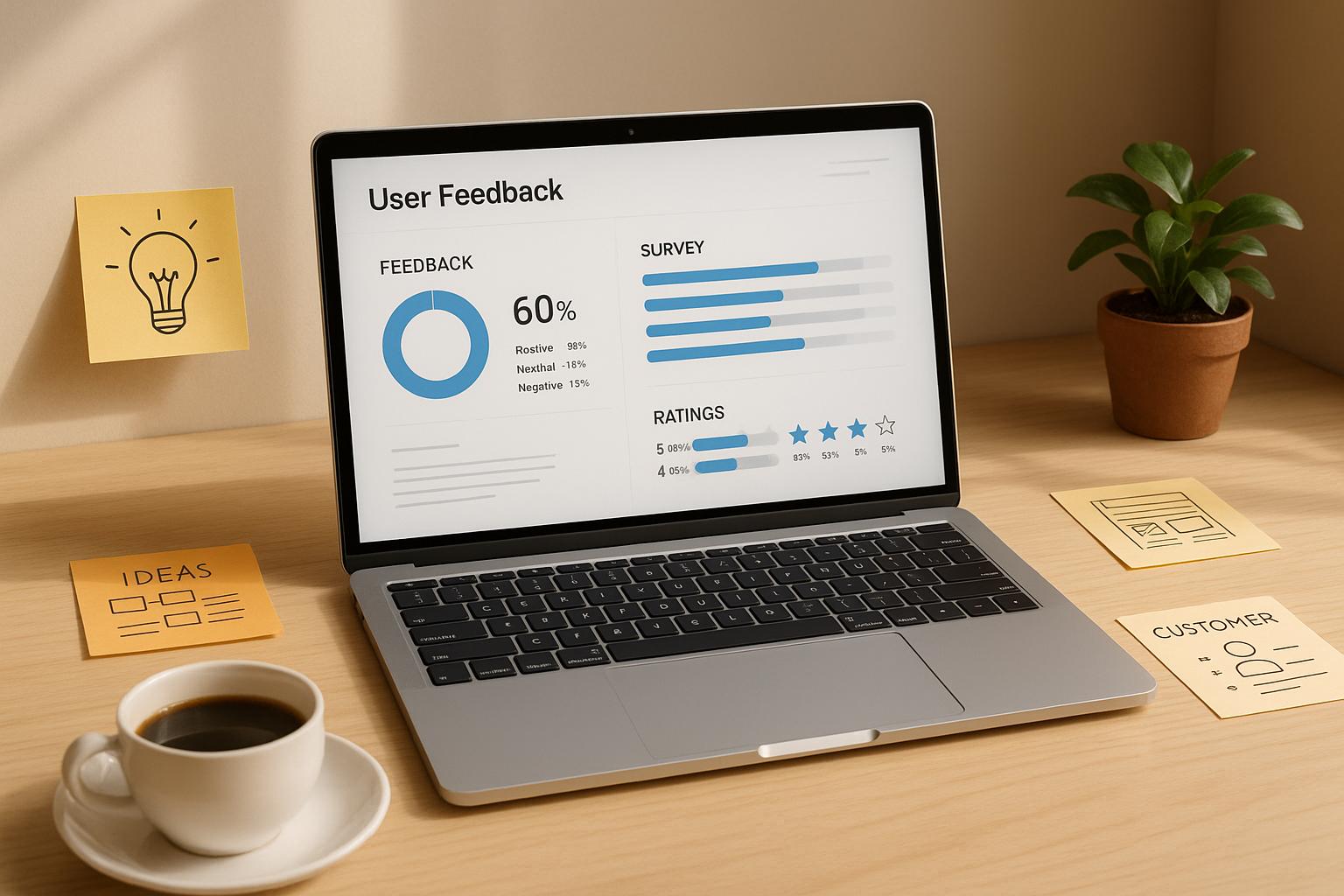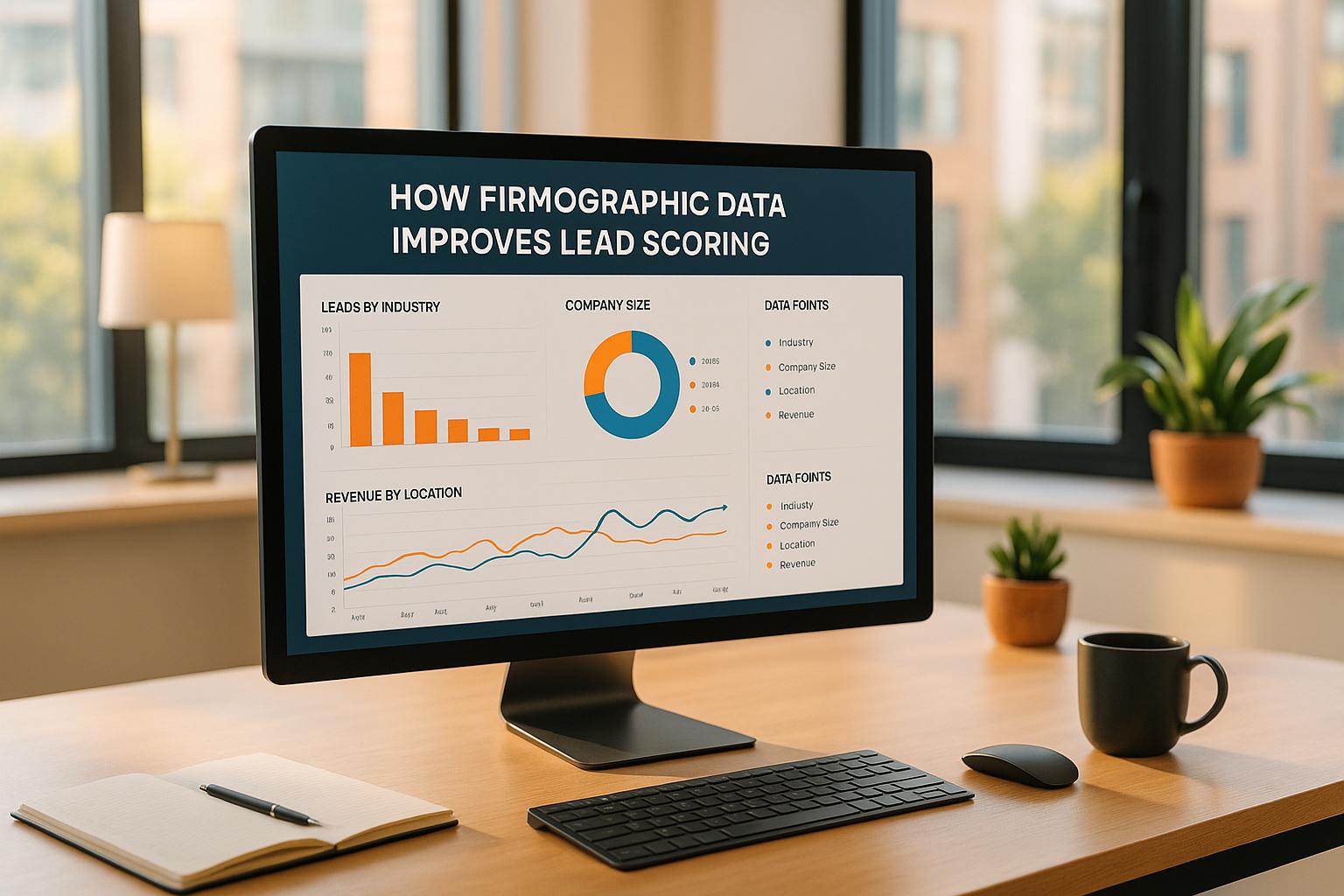User-generated content (UGC) is a game-changer for social media marketing. It builds trust, drives engagement, and increases conversions by showcasing real customer experiences. Here's how UGC enhances every stage of the social media funnel:
- Awareness: UGC expands brand visibility through organic shares and honest endorsements.
- Engagement: Relatable content sparks conversations and interactions.
- Consideration: Reviews and how-to posts reduce doubts and influence decisions.
- Conversion: Testimonials and unboxing videos provide the final push to buy.
- Loyalty: Happy customers create content, fueling a cycle of growth.
Want to make UGC work for you? Use branded hashtags, offer incentives, and integrate UGC into both organic posts and paid ads. Track metrics like engagement, click-through rates, and conversions to measure success. Trends like micro-influencers and AI can further optimize your strategy.
UGC transforms your customers into marketers, making your brand more relatable and effective.
Boost Your Sales with UGC: Proven Social Media Strategies
Understanding Social Media Funnels and UGC's Role
Social media funnels mirror how people naturally interact on platforms like Instagram, TikTok, and Facebook. Unlike traditional, linear sales journeys, these funnels offer multiple touchpoints where potential customers can stumble upon your brand, engage with it, and eventually make a purchase.
Users play an active role in this process by commenting, sharing, and creating posts about the brands they love. This is where user-generated content (UGC) shines - popping up at different stages of the customer journey to make the experience feel more genuine and persuasive. Let’s break down the funnel stages and explore how UGC plays into each one.
Key Stages of a Social Media Funnel
Awareness is the starting point, where people first discover your brand. This might happen through hashtags, recommendations, or shared posts. UGC plays a big role here because customer posts often reach audiences that branded ads can’t. Why? People see these shares as honest endorsements, not just another ad trying to sell something.
Engagement happens when users start interacting with your content - or better yet, with posts created by your customers. UGC drives higher engagement because it’s relatable. Think about it: a real customer’s experience feels more personal. Comments on these posts often spark conversations about your product, creating organic buzz that’s hard to replicate with traditional marketing.
Consideration is when potential customers start digging deeper. They might check out your profile or look for more customer reviews and content. UGC is incredibly effective at this stage because it helps ease doubts. Real photos, reviews, or videos from actual users make your product feel like a safer bet.
Conversion is the moment someone becomes a paying customer. At this stage, UGC can seal the deal. Think of a well-timed unboxing video or a glowing customer review - it provides that last bit of reassurance needed to hit “buy.” Many brands even feature UGC on product pages or use it in retargeting ads to boost sales.
Loyalty and Advocacy sit at the bottom of the funnel, where satisfied customers turn into repeat buyers and vocal supporters of your brand. These advocates share their experiences, helping you attract new customers while strengthening their own bond with your brand. It’s a cycle that keeps fueling itself.
How UGC Builds Trust and Engagement
UGC doesn’t just support the funnel - it deepens connections at every stage. Unlike polished brand campaigns, customer-generated content feels raw and real. It’s easy to tell the difference between a professional product shoot and a quick Instagram story showing how someone actually uses your product.
Relatability is a big reason why UGC works so well. When people see someone like them - whether it’s a busy parent or a fitness enthusiast - using a product, it’s easier to imagine themselves enjoying the same benefits. For example, a working mom sharing how a meal kit saves her time feels far more relatable to other parents than a generic ad about convenience.
UGC also bridges the credibility gap that many brands struggle with. Modern consumers are skeptical of marketing claims, but they trust other customers. A genuine review or post carries more weight than any slogan or sales pitch.
Then there’s the emotional side. Real stories resonate because they include personal details and genuine feelings. UGC doesn’t just show what a product does; it shows how it impacts people’s lives. Whether it’s the joy of unboxing a long-awaited package or the practicality of a product fitting seamlessly into someone’s routine, these emotions stick with viewers and influence their choices.
Social media’s interactive nature amplifies UGC’s impact even further. When brands engage with customer posts - whether by responding, sharing, or encouraging discussions - it shows they value their community. This back-and-forth strengthens relationships and motivates more customers to share their own experiences. It’s a win-win for everyone involved.
Adding UGC to Social Media Funnels
Incorporating user-generated content (UGC) into your social media funnels isn’t just a good idea - it’s a smart move when done strategically. The key lies in pairing the right types of UGC with specific stages of the funnel, encouraging customers to create content with thoughtful incentives, and amplifying its reach through both organic and paid channels.
UGC Formats for Each Funnel Stage
Different stages of the funnel call for different types of UGC. Here’s how to match content to the customer journey:
- Photos and short videos work wonders for the awareness stage. These formats grab attention quickly and highlight your product in everyday settings, making them easy to share and discover organically.
- Unboxing videos and first-impression posts are perfect for sparking engagement. They naturally invite questions about your product’s features, pricing, or where to buy, creating opportunities for your brand to join the conversation.
- In the consideration phase, detailed reviews, comparison posts, and how-to content shine. These formats go beyond surface-level impressions, offering the depth potential buyers need. For example, a customer sharing their month-long skincare journey or breaking down how they use your software can help others make informed decisions.
- Testimonials and success stories are powerful tools for driving conversions. Simple posts showing real results help potential customers envision what your product can do for them.
- At the loyalty stage, community-driven content like tips, tutorials, and brand challenges strengthens your relationship with existing customers while attracting new ones. These posts create a sense of belonging and excitement around your brand.
Next, let’s dive into how to encourage customers to create this kind of content.
Strategies for Encouraging UGC Creation
Getting customers to create UGC doesn’t have to be complicated. Here are a few effective strategies to inspire them:
- Branded hashtags are a classic tool that still works. Make sure your hashtag is memorable and ties into your brand’s story or customer experience - not just your company name. This helps avoid confusion and encourages meaningful contributions.
- Incentive programs don’t always need to involve discounts or cash. Recognition, exclusive perks, or being featured on your main account can be just as motivating. For example, a "customer spotlight" series can generate excitement and engagement within your community.
- Post-purchase follow-ups are a natural way to prompt UGC. Timing is everything - reach out after customers have had a chance to use your product, but while their enthusiasm is still fresh. A friendly email asking for feedback, paired with a suggestion to share their experience, can yield great results.
- Simplify the sharing process to boost participation. Provide clear instructions, suggest captions, or offer templates they can personalize. The easier you make it, the more likely people are to get involved.
Using UGC in Paid and Organic Content
Once you’ve gathered UGC, it’s time to put it to work. Here’s how to make the most of it across organic and paid channels:
- Organic UGC works best when it feels authentic. Instead of constantly reposting customer content, integrate it into your storytelling. Share posts in your Stories, create compilations showcasing different use cases, or draw inspiration from customer photos for your own content.
- Paid social campaigns benefit from UGC because it feels genuine and less like an ad. Customer photos and videos often lead to higher engagement rates and lower costs per click compared to traditional branded content. Just make sure the UGC aligns with your campaign goals - whether that’s grabbing attention or addressing specific pain points.
- Retargeting campaigns thrive with UGC. For instance, showing real customers enjoying your product can nudge someone who visited your site but didn’t make a purchase to take the final step.
- Cross-platform distribution extends the reach of UGC. A customer’s Instagram post might double as a Facebook ad, while a glowing review could become a LinkedIn case study. Tailor the content for each platform while keeping the authentic voice that makes UGC so effective.
- Community engagement around UGC builds momentum. When you share customer content, take the time to respond to comments, answer questions, and encourage discussions. This shows you value their contributions and motivates others to share their experiences too.
UGC isn’t just about content - it’s about connection. By weaving customer stories into your strategy and engaging with your audience, you create a powerful cycle of trust and loyalty that keeps your brand top of mind. Top brands use UGC not only to spark conversations but also to deepen relationships that go beyond a single interaction.
sbb-itb-a84ebc4
Measuring the Impact of UGC on Funnels
To know if your user-generated content (UGC) strategy is paying off, you need to look beyond surface-level metrics like likes and shares. The goal is to create a clear way to track how UGC helps move people through your funnel and drives real results. By measuring the right data at each stage, you can determine which types of UGC work best and where adjustments might be needed.
Key Metrics for UGC Performance
Engagement metrics are a good starting point to see how well UGC resonates with your audience. Go beyond likes - track comments, saves, and shares. For example, comments like "Where can I buy this?" or "Is this available in my size?" show a deeper level of interest and influence.
Reach and impressions are another critical area. They reveal how far your UGC spreads, both immediately and over time. Be sure to evaluate performance across different distribution methods, like organic posts versus paid promotions.
Click-through rates (CTR) from UGC to your website or product pages give insight into its conversion potential. UGC often outperforms branded content in terms of CTR, so track this metric separately for organic posts and paid campaigns.
Conversion tracking ties everything together. Use tools like UTM parameters to link UGC to specific goals, such as purchases or sign-ups. Visitors coming from UGC often show higher intent to buy and lower bounce rates, making this metric especially valuable.
Sentiment analysis helps you understand the emotional impact of UGC. Tools for social listening can classify mentions and comments as positive, neutral, or negative, giving you a clearer picture of how your audience feels about your brand.
Cost efficiency is another factor to consider, particularly in paid campaigns. Compare metrics like cost per click (CPC), cost per acquisition (CPA), and return on ad spend (ROAS) between UGC-based ads and traditional creative.
Finally, customer lifetime value (CLV) can highlight the long-term benefits of UGC. Customers acquired through UGC often come with built-in trust and are more likely to become repeat buyers and even brand advocates.
Analyzing UGC Formats by Funnel Stage
Different types of UGC perform better at different stages of the funnel. By analyzing performance within each stage, you can fine-tune your strategy. Focus on comparing UGC formats within the same funnel stage rather than across stages, as the goals vary significantly.
- Awareness Stage: Photo posts tend to perform well in terms of reach and discovery, while short videos often drive more engagement. Track metrics like impressions, reach, and hashtag performance to see which formats grab attention most effectively.
- Consideration Stage: Video reviews and detailed posts typically encourage comments and questions, signaling deeper engagement. Metrics like time spent viewing, CTR to product pages, and follow-up inquiries can help you evaluate their impact.
- Conversion Stage: Customer testimonials and success stories are powerful drivers of purchase decisions. Keep an eye on conversion rates, average order values, and the time between UGC exposure and purchase.
- Loyalty Stage: This stage focuses on building community and encouraging repeat interactions. Metrics to watch include how often existing customers engage with UGC, share their own content, or participate in brand challenges and campaigns.
| Funnel Stage | Best Performing UGC Format | Key Metric to Track |
|---|---|---|
| Awareness | Photo posts | Reach and impressions |
| Consideration | Video reviews and tutorials | Engagement rate and comments |
| Conversion | Written testimonials with results | Click-through rate to product pages |
| Loyalty | Community challenges and tips | Participation rate and shares |
Attribution tracking plays a key role when customers interact with multiple pieces of UGC before converting. Tools that map the customer journey across touchpoints can help pinpoint which formats contribute most to final conversions.
It’s also important to factor in seasonal trends and product launches, as these can significantly affect UGC performance. Keeping an eye on these variables in your analytics dashboards can provide valuable insights.
New Trends in UGC for Social Media Funnels
User-generated content (UGC) is evolving, and brands are finding new ways to weave it into their social media funnels. These trends are opening doors for businesses to connect with audiences in more relatable ways, enhancing results across every stage of the funnel. As mentioned earlier, aligning UGC with the funnel stages is key, and these trends take that strategy to the next level.
The Rise of Micro-Influencers and Real-Time UGC
Micro-influencers are becoming the heart of UGC strategies. With follower counts between 1,000 and 100,000, they often see higher engagement rates compared to mega-influencers. Their content feels more personal and trustworthy, making it a perfect fit for social media funnels.
Audiences are also gravitating toward real-time, spontaneous content. Think live unboxings, unfiltered reviews, or behind-the-scenes moments shared through platforms like Instagram Stories, TikTok, or Snapchat. This type of content creates urgency and a sense of FOMO (fear of missing out), helping move audiences quickly from awareness to consideration.
Another trend is the shift from traditional hashtag campaigns to community-driven challenges. These challenges inspire users to create themed content, flooding social media with UGC while fostering a sense of community around the brand. As participants share their experiences, the content naturally flows through the social media funnel, encouraging others to join in.
AI and Automation in UGC Curation
Artificial intelligence is transforming how brands discover, curate, and optimize UGC. AI-powered tools can scan countless social media posts to find mentions of your brand or products - even when there are no direct tags or hashtags involved.
Smarter curation is now possible with machine learning, which can analyze which types of UGC perform best at different stages of the funnel. These tools can categorize content based on factors like sentiment, visuals, and engagement, making it easier for brands to pick the most impactful pieces for their campaigns.
Automation has also simplified rights management. Tools now allow brands to secure permissions for UGC quickly, speeding up the process and enabling faster implementation of strategies.
Predictive analytics is another game-changer. By examining past performance data, AI tools can predict which UGC formats are likely to resonate with specific audiences at different funnel stages. This helps brands fine-tune their UGC selection before posting, boosting overall campaign results.
With dynamic personalization, AI takes things a step further by matching UGC to individual users based on their preferences and behavior. This means that two visitors to your social media profiles might see entirely different UGC, each tailored to guide them through your funnel more effectively.
Using the Marketing Funnels Directory for UGC Optimization

To keep up with these trends, brands can tap into tools like the Marketing Funnels Directory, a resource designed to help businesses integrate UGC seamlessly into their social media strategies. It offers a variety of features that cater to both beginners and advanced users.
For example, the directory includes UGC management tools that automate content discovery, secure usage rights, and track performance. These tools work with popular social media management platforms, making it easier to incorporate UGC into existing workflows.
The platform also provides educational resources, like courses and books, that guide businesses through advanced strategies such as micro-influencer collaborations and AI-driven content curation. These materials offer step-by-step instructions for implementing the latest trends.
If you’re looking for expert help, the directory lists vendors and agencies specializing in UGC campaigns. They can assist with more sophisticated strategies, saving businesses the effort of building in-house expertise.
For those just starting out, there are beginner-friendly resources to help set up tracking systems and identify the best content formats for each funnel stage. Advanced users can explore tools for detailed attribution modeling and cross-platform optimization.
The directory is regularly updated with the latest AI-powered UGC tools and emerging platforms, ensuring businesses stay ahead of the curve. By adopting these technologies, brands can refine their social media funnels and achieve better results, all while keeping pace with the ever-changing UGC landscape.
Conclusion: Using UGC in Social Media Funnels
User-generated content (UGC) brings a genuine, relatable element to every stage of the social media funnel, from sparking awareness to driving conversions. It adds the kind of authenticity that resonates with today's consumers, fostering trust in ways traditional marketing often struggles to achieve. This human touch paves the way for stronger connections and deeper engagement.
As discussed, UGC doesn't just boost brand credibility - it actively supports conversions at every step. Think about a customer's unboxing video that grabs attention, detailed reviews that help others weigh their options, or heartfelt testimonials that nudge potential buyers toward making a decision. These real-life contributions speak directly to audiences in a way that feels personal and relatable. And the results? Higher engagement, better conversion rates, and loyal customers who keep coming back.
Trends like micro-influencers and AI-driven content curation are reshaping how brands approach UGC, making it even more impactful. Real-time content creation, community challenges, and predictive analytics are just a few examples of how brands can refine their UGC strategies to improve funnel performance.
To make the most of these opportunities, having the right tools and resources is key. The Marketing Funnels Directory is a great place to start, offering tools for managing UGC, educational courses, and access to experts who specialize in these campaigns. Whether you're new to UGC or looking to fine-tune your approach, these resources can help you achieve faster, more meaningful results.
Start by identifying the most critical stages of your funnel and applying targeted UGC strategies. Keep an eye on your metrics to turn engagement into long-term growth. With consistent effort and the right approach, UGC can transform your social media funnels into powerful engines for driving conversions and building lasting success.
FAQs
How can brands inspire customers to create user-generated content (UGC) for their social media funnels?
Brands can encourage customers to create user-generated content (UGC) by making it enjoyable, rewarding, and simple to join in. Hosting contests, challenges, or campaigns centered around a specific hashtag is a great way to invite customers to share their experiences in a natural and engaging way. For instance, asking customers to share photos or videos featuring your product can ignite creativity and interaction.
To boost participation, consider offering incentives like discounts, special perks, or the opportunity to be highlighted on your brand’s social media. Keep the process straightforward - provide clear instructions and ensure it’s easy for anyone to take part. UGC doesn’t just drive engagement; it helps build trust by showcasing genuine stories and experiences from real customers, which others are more likely to connect with.
What metrics should you track to measure the impact of user-generated content in social media funnels?
To evaluate how user-generated content (UGC) influences your social media funnels, keep an eye on engagement metrics like likes, comments, shares, and user participation. These numbers give you a clear picture of how actively your audience is connecting with the content.
You’ll also want to track reach and impressions to see how far your UGC is spreading, as well as click-through rates (CTR) to determine how effectively it’s driving traffic to your website or landing pages. On top of that, performing a sentiment analysis can help you understand audience perception and ensure the content aligns with your brand's voice and objectives.
By focusing on these metrics, you can better understand how UGC contributes to building awareness, encouraging consideration, and driving conversions within your social media strategy.
How can micro-influencers and AI tools improve the impact of user-generated content in social media marketing?
Micro-influencers play a key role in boosting user-generated content (UGC) by sharing genuine, relatable posts that connect with niche communities. Unlike bigger influencers, they often see higher engagement because their followers perceive them as more approachable and aligned with specific interests.
On the other hand, AI tools make it easier for businesses to find and leverage top-notch UGC. By automating the process, AI can sift through content, pick what’s most relevant, customize it for audience preferences, and fine-tune its delivery for better results. When combined, micro-influencers and AI create a powerful approach to social media marketing - one that increases engagement, builds trust, and drives conversions.


